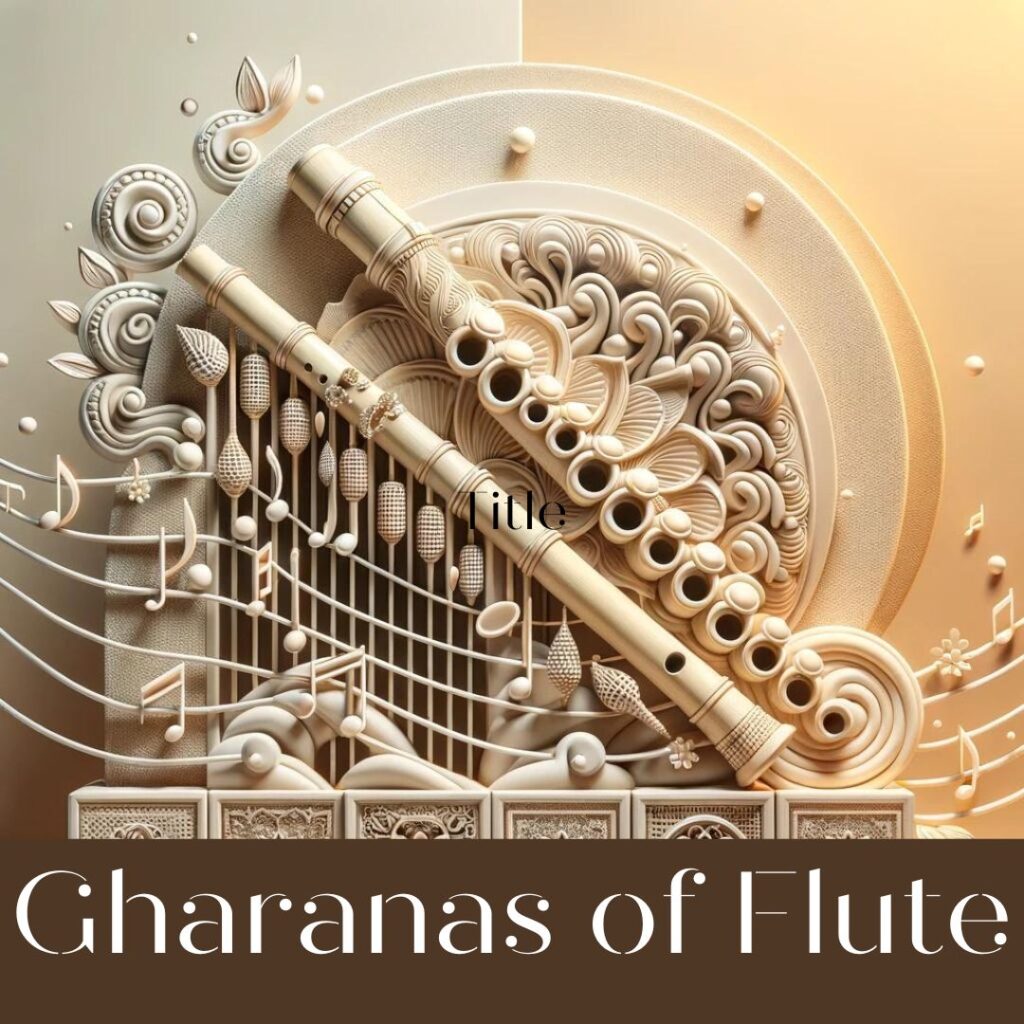Introduction to the Gharanas of Flute
The flute, with its serene and ethereal sound, holds a place of reverence in the world of music. Within the classical Indian music panorama, the concept of Gharanas (schools or families of music) represents a rich tapestry of cultural heritage, each with its own unique style, techniques, and traditions. This article embarks on an exploratory journey into the Gharanas of Flute and their intricacies, shedding light on their profound impact on the musical landscape.
Understanding Flute Gharanas
The term ‘Gharana’ originates from the Hindi word ‘Ghar’, implying ‘house’ or ‘family’. In the context of Indian classical music, it refers to a lineage of musicians sharing a distinct musical style, often passed down through generations. Flute Gharanas are no different, each distinguished by their interpretation, repertoire, and playing techniques, deeply rooted in the cultural ethos of their regions.
The Maihar Gharana
Diving into the Maihar Gharana, we explore its origins in the small princely state of Maihar in central India. This Gharana gained prominence under the tutelage of Baba Allauddin Khan, whose innovative approach to music transcended traditional boundaries. Flutists associated with Maihar Gharana are known for their intricate ragas and elaborate improvisations, blending the soulful melodies of the flute with the Gharana’s rich musical legacy.
The Banaras Gharana
The Banaras Gharana, originating from the spiritual city of Varanasi, is celebrated for its emotive and expressive flute renditions. This Gharana brings to life the essence of Bhakti (devotion), incorporating the spiritual and mystical dimensions of music. The distinctive playing style of the Banaras flutists, with their deep, resonant tones and dynamic tempo, evokes the city’s sacred atmosphere.
The Kirana Gharana
The Kirana Gharana stands out for its pure and meditative sound, emphasizing the emotional depth and subtlety of ragas. The lineage, known for its vocal traditions, has also made significant contributions to flute playing, highlighting the instrument’s versatility and expressiveness. Kirana’s approach to the flute focuses on the nuanced articulation of notes, creating a seamless flow of music that touches the soul.
The Gwalior Gharana
Tracing its roots to the cultural hub of Gwalior, this Gharana is one of the oldest and most respected in Indian classical music. Gwalior’s flute style is characterized by its rhythmic precision and clarity of notes, offering a rich palette of musical expressions. The Gharana’s emphasis on lyrical compositions and intricate embellishments showcases the flute’s capability to convey complex emotions and narratives.
Intricacies of Flute Playing Across Gharanas
The art of flute playing varies significantly across Gharanas, each bringing its own set of techniques and interpretations. The differences lie in the approach to breath control, finger placement, and the use of ornamentations, reflecting the diverse musical ethos of each Gharana. This section delves into the technical aspects that define the unique sound and style of flute music within each tradition.
Learning and Preserving Gharana Traditions
In the realm of classical Indian music, the Guru-Shishya parampara plays a pivotal role in preserving the traditions and teachings of Gharanas. This time-honored system ensures the transfer of knowledge from masters to disciples, keeping the essence of Gharana music alive. The section explores modern methods and challenges in teaching and learning these ancient traditions.
Innovations and Fusion in Flute Music
The contemporary landscape of flute music witnesses a fascinating blend of traditional Gharana styles with modern genres, creating a vibrant fusion that resonates with global audiences. This segment highlights the work of innovative flutists who are redefining the boundaries of classical music, incorporating elements from jazz, pop, and world music into their repertoire.
Gharanas of Flute and their Global Influence
The influence of Gharanas extends beyond the shores of India, as flutists collaborate with international artists and ensembles, introducing the rich heritage of Indian flute music to the world. This section celebrates these cross-cultural exchanges and the global appreciation of the intricate beauty of Gharana music.
Challenges Facing Traditional Flute Gharanas
Despite their profound cultural significance, traditional Flute Gharanas face challenges in the contemporary music scene, from adapting to modern tastes to competing with digital technologies. This part of the article discusses the efforts to preserve the authenticity and relevance of Gharana music in the 21st century.
Conclusion and Future of Flute Gharanas
As we conclude our exploration of the Gharanas of Flute and their intricacies, we reflect on their enduring legacy and the future trends shaping this ancient art form. The resilience and adaptability of Gharana traditions promise a vibrant future, ensuring that the soul-stirring melodies of the flute continue to enchant generations to come.
FAQs
How do flute styles differ across Gharanas? The styles differ in aspects such as breath control, finger techniques, and the use of ornamentations, each reflecting the unique musical ethos of the Gharana.
Why is the Guru-Shishya parampara important? It ensures the preservation and transmission of traditional music teachings, maintaining the integrity and authenticity of Gharana styles.
Can Gharana traditions adapt to modern music? Yes, many artists are innovatively blending traditional styles with contemporary genres, showcasing the versatility and relevance of Gharana music today.
What challenges do traditional Flute Gharanas face? Adapting to modern tastes and technologies while preserving their authentic traditions is a significant challenge.
How can one learn about Flute Gharanas? Learning from a master within the Guru-Shishya tradition is ideal, but many resources are also available online for those interested in self-study.
What is the future of Flute Gharanas? With ongoing innovations and global collaborations, the future looks promising, bridging traditional and modern music worlds.
Instagram: @thepinklotusacademia
Facebook: @thepinklotusacademia
Enquire Now: Click Here
Learn more: The Pink Lotus Academia
Youtube: The Pink Lotus Academia













